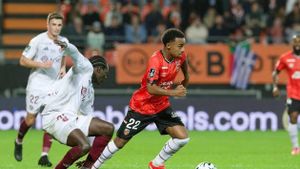Emerging trends within Italian higher education are shedding light on the rapidly changing preferences among students entering university. Recent discussions featuring Maurizio Casiraghi, Pro-Rector for Teaching at the University Bicocca, have highlighted these shifts, particularly as the current high school graduates begin to make pivotal decisions about their academic futures.
According to recent analyses from the Italian Ministry of University and Research, there is significant data reflecting the choices students are making about their preferred faculties. The findings serve as a barometer of public sentiment—not just about education but also about the ever-evolving job market driven largely by technological advancements.
One noteworthy influence affecting student preferences is the growing fear surrounding the prospects of artificial intelligence (AI). Reports suggest many students are reassessing their educational paths based on claims of AI replacing certain jobs. This trend has prompted some faculties, particularly language degrees, to experience noticeable declines. During the recent chat on Good Morning Kiss Kiss, Casiraghi explained, "Want to know what else the Pro-Rector of University Bicocca told us? Then listen to the podcast!" highlighting the importance of staying informed on such issues.
This phenomenon raises questions—how will traditional programs adapt to capture the interests of future students seeking more resilient qualifications? The Italian higher education system has always been known for its rich history and diverse offerings, but it now faces the challenge of maintaining this diversity amid the sweeping changes instigated by technology.
The insights presented by the Ministry encapsulate not just statistics but the sentiments of the youth. They reveal which programs are gaining interest and which are fading, mirroring broader societal shifts. For example, engineering and technology-related faculties are increasingly becoming top choices, reflecting students' interests aligned with future job security.
These findings could significantly impact entities across the educational sector, from policymakers to university administrators who must respond to this growing trend. The question remains whether institutions will pivot quickly enough to accommodate the shifting desires of students who are, understandably, concerned about their future careers.
Educators are urged to reassess how they position their programs, emphasizing not only traditional learning but also how these degrees can integrate with the latest technological trends. Investing resources to promote interdisciplinary studies—merging fields like digital literacy with traditional degrees—might be key to attracting students.
The direction of student enrollment trends does not merely affect the academic institutions but has broader ramifications for Italy’s economy and labor market. A clear correlation exists between the fields students choose to pursue and the employment prospects within those industries, hence the importance of nurturing academic offerings to attract and retain students.
Through proactive dialogues facilitated by leaders like Casiraghi, universities are gradually becoming more receptive to student insights and concerns. This engagement could steer curriculums to be not only relevant but also innovative and adaptable to the ever-changing marketplace.
Future trends indicate the importance of continual assessments of academic programs as student preferences shift against the backdrop of advancements like AI. With reports showing potential declines of certain programs, universities must act decisively to safeguard their relevance.
Overall, the dialogue surrounding the emergence of preferred faculties emphasizes the necessity for the higher education sector to respond dynamically to technological advancements and labor market trends. The results of this inquiry are poignantly relevant—not just reflective of changing student interests, but indicative of the broader societal shifts at play.



